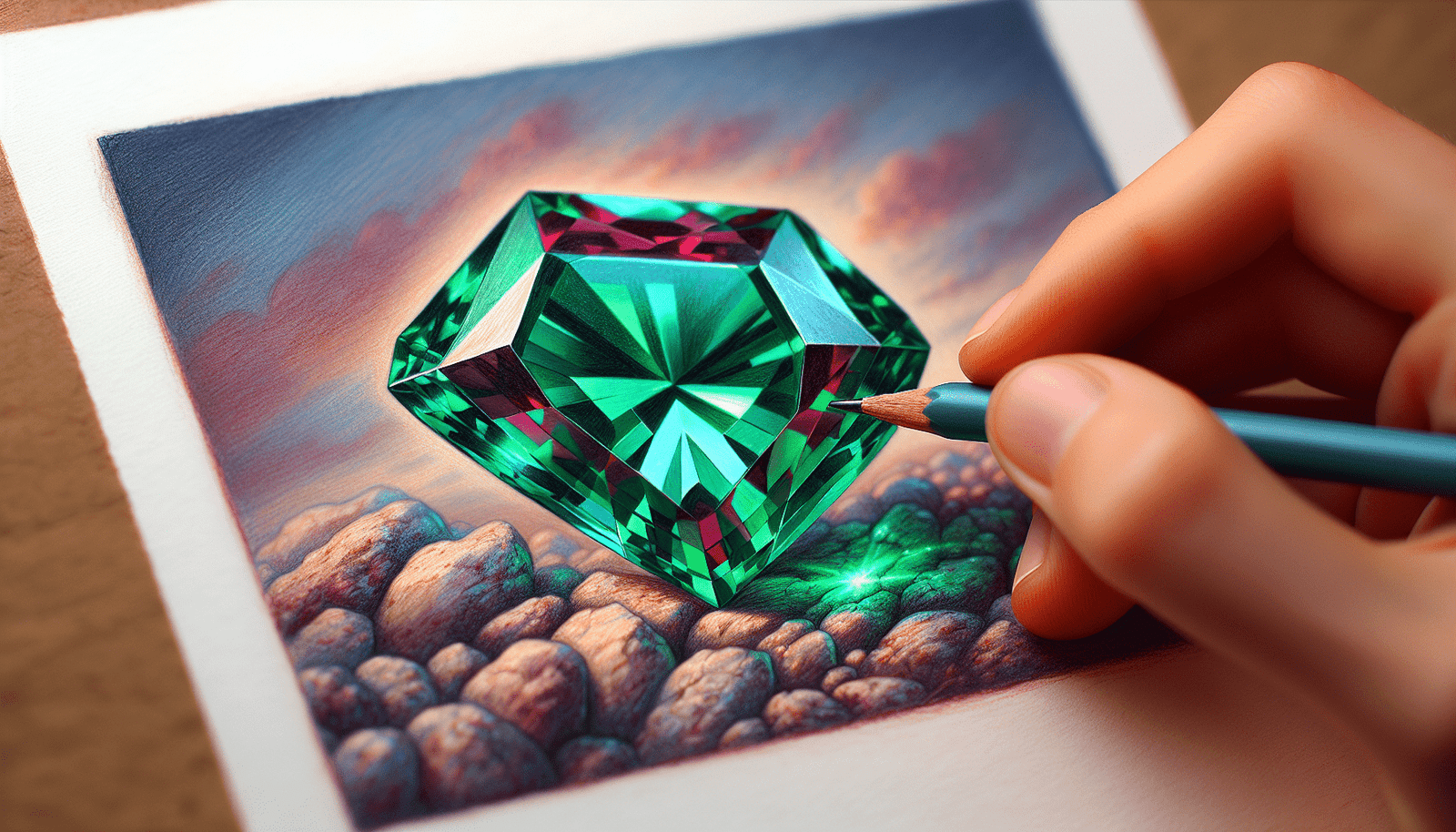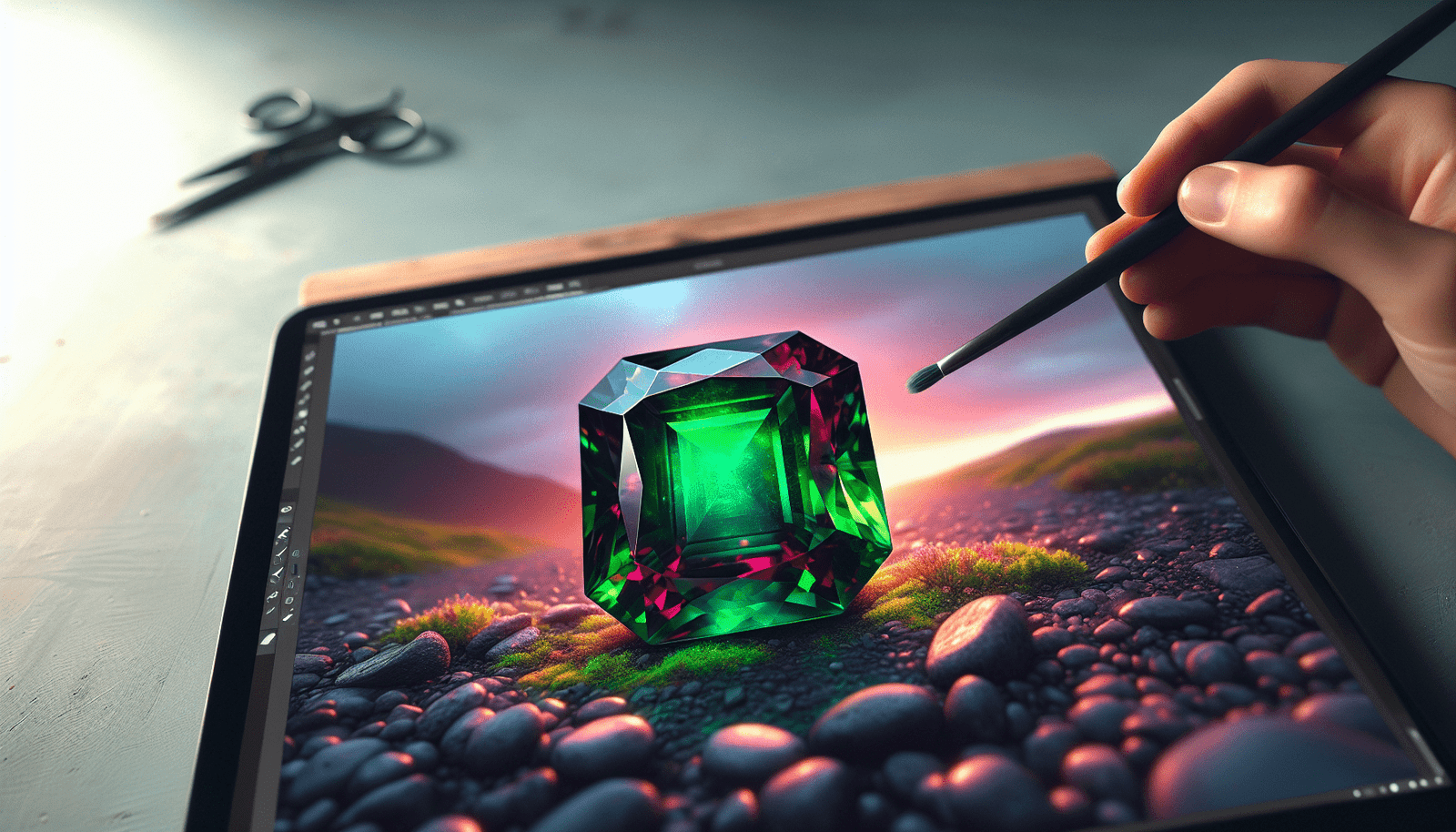You’re about to delve into the fascinating world of Alexandrite, a gemstone celebrated for its extraordinary ability to change color under different lighting. In “Why Is Alexandrite So Rare?” you’ll uncover the geological and historical journey of this remarkable stone, understanding why it’s such a prized possession among collectors and gem enthusiasts. This article explores the unique conditions required for Alexandrite to form, along with the limited geographical locations where it can be found, shedding light on its rarity and allure. Get ready to be captivated by the story of one of the most enigmatic gems in the world! Have you ever wondered why alexandrite is so rare?

What is Alexandrite?
Alexandrite is a captivating and mesmerizing gemstone that has fascinated gem enthusiasts for centuries. Known for its chameleon-like ability to change colors, alexandrite can appear green in daylight and transform into a reddish-purple hue under incandescent light. This unique characteristic sets it apart from other gemstones and renders it highly coveted.
The Magical Color Change
One of the most remarkable attributes of alexandrite is its distinctive color change. This phenomenon occurs due to the gemstone’s complex chemical composition and crystal structure. Essentially, alexandrite contains trace amounts of chromium, which absorbs light and causes this magical shift in color. Daylight, which contains more blue light, makes alexandrite appear green, while incandescent light, rich in red wavelengths, brings out its reddish or purplish side.
A Bit of History
You might also be intrigued to know that alexandrite has a rich historical background. Discovered in Russia’s Ural Mountains in the 1830s, it was named in honor of Tsar Alexander II. The gem soon became associated with good fortune and was even rumored to have strong healing properties.
Why Is Alexandrite So Rare?
So, why is alexandrite among the rarest gemstones in the world? This rarity can be attributed to several factors, including its geological formation, mining locations, and stringent quality standards.
Geological Formation
The formation of alexandrite is nothing short of a geological marvel. It forms under specific conditions, in environments that have a unique combination of elements like beryllium and chromium. These elements must be present in just the right amounts without contaminating elements like iron, which can affect its color-changing ability.
Limited Mining Locations
Another factor contributing to its rarity is the limited number of locations where high-quality alexandrite can be found. The original and still the most famous source is the Ural Mountains in Russia. However, significant deposits have been discovered in other locations like Brazil, Sri Lanka, and East Africa. Despite these additional mining sources, finding gem-quality alexandrite remains an arduous and rare event.
High Standards of Quality
The quality of alexandrite is judged on stringent criteria, making it challenging to find stones that meet high standards. These criteria include color change intensity, clarity, and the absence of imperfections. High-quality alexandrite that exhibits a strong color change and good clarity is exceedingly rare, making such stones highly valuable.

Comparing Alexandrite with Other Gemstones
To better grasp alexandrite’s rarity, it helps to compare it with other gemstones. Let’s take a look:
| Gemstone | Primary Color | Unique Features | Rarity Level |
|---|---|---|---|
| Alexandrite | Green/Red or Purple | Color Change Phenomenon | Extremely Rare |
| Diamond | Colorless or Various | Hardness, Sparkle | Rare (but more common than alexandrite) |
| Ruby | Red | Strong Red Color, Fluorescence | Rare |
| Sapphire | Blue, Pink, Yellow | Durability, Variety of Colors | Rare (Blue is most common) |
| Emerald | Green | Vivid Green Color, Inclusions | Rare |
As you can see, while many gemstones are rare and possess unique features, alexandrite stands out mainly due to its extraordinary color change and the very specific conditions required for its formation.
How to Identify Genuine Alexandrite
Given its rarity and high value, you might be concerned about distinguishing genuine alexandrite from synthetic or imitation stones. Here are some tips to help you authenticate alexandrite.
Consulting a Gemologist
One of the most reliable ways to confirm the authenticity of alexandrite is by consulting a certified gemologist. These experts can perform various tests, including advanced spectroscopy and chemical analysis, to determine the gemstone’s authenticity.
Observing the Color Change
A tell-tale sign of genuine alexandrite is its color change. Make sure to examine the gemstone under different light sources to ensure this change occurs. Remember, the shift should be quite dramatic—from green to reddish-purple or red.
Checking for Inclusions
Most natural alexandrite stones will have some inclusions or imperfections, which is perfectly normal. If a stone appears too flawless and lacks any inclusions, it might be synthetic.

The Value of Alexandrite
So, what makes alexandrite so valuable, aside from its rarity? The value is determined by various factors like carat weight, color change strength, clarity, and origin.
Carat Weight
Much like other gemstones, larger alexandrite stones are usually more valuable. However, high-quality smaller stones can also fetch a premium price, particularly if they exhibit a strong color change.
Strength of Color Change
The more dramatic the color change, the higher the value. Stones that show a vivid green to a vibrant red or purple are considered top-tier and can be quite pricey.
Clarity and Cut
The clarity of the stone also plays a significant role in determining its value. Fewer inclusions typically mean higher value. Additionally, how well the stone is cut to maximize its color change and brilliance can also affect its price.
Origin
The origin can significantly influence the value of alexandrite. Stones from the Ural Mountains in Russia are considered the most valuable due to their historical significance and superior quality. However, high-quality stones from Brazil, Sri Lanka, and East Africa can also command high prices.
Caring for Your Alexandrite
If you are fortunate enough to own an alexandrite gemstone, taking proper care of it is essential to maintain its beauty and value over time.
Cleaning
Cleaning your alexandrite is relatively straightforward. Use warm soapy water and a soft cloth to gently clean the stone. Avoid using harsh chemicals or ultrasonic cleaners, as these could damage the gemstone. https://sachitools.com/
Storing
Store your alexandrite jewelry in a soft pouch or separate compartment in your jewelry box to avoid scratches. Alexandrite is fairly hard (about 8.5 on the Mohs scale), but it’s always good practice to protect it from potential damage.
Regular Inspections
Having your alexandrite inspected regularly by a professional can help you catch any early signs of wear or damage, ensuring the longevity of this precious gemstone.
Investing in Alexandrite
For those interested in investing in gemstones, alexandrite offers a compelling opportunity. Its rarity and unique characteristics ensure that its value remains high. However, keep in mind a few considerations before making a purchase.
Research and Understand the Market
Investing in rare gemstones like alexandrite requires thorough research. Understand the current market conditions, price trends, and the factors influencing alexandrite’s value.
Buy from Reputable Sources
Ensure you are purchasing from reputable dealers who can provide certification and detailed information about the gemstone’s origin, quality, and authenticity.
Consider Professional Appraisal
Having the stone professionally appraised can offer peace of mind and provide a clear understanding of its value, which is crucial for investment purposes.
The Future of Alexandrite
While the future of alexandrite mining and availability remains uncertain, one thing is clear—this gemstone will always hold a special place in the world of gemology. Advances in synthetic production might make it more accessible, but nothing will replace the allure of a genuine, natural alexandrite.
Synthetic Alexandrite
Synthetic alexandrite offers a more affordable alternative for those who admire its beauty but cannot afford a natural stone. While not the same, these lab-created stones still exhibit the characteristic color change.
Environmental Impact
With increased awareness of environmental impact, the gemstone industry is moving towards more sustainable mining practices. This shift could influence the availability and pricing of natural alexandrite in the future.
Conclusion
Why is alexandrite so rare? From its unique geological formation and limited mining locations to the high standards for quality, numerous factors contribute to its rarity. This scarcity, combined with its stunning color-changing ability, makes alexandrite one of the most mesmerizing and valuable gemstones in the world. Whether you are a gemstone enthusiast, an investor, or simply curious, understanding the intricacies of alexandrite enhances your appreciation of this extraordinary gem. So, the next time you come across an alexandrite, you’ll know why it’s truly a treasure of nature.



